This essay was first made available last month, exclusively for our Patreon supporters. If you want to support Full Stop’s original literary criticism, please consider becoming a Patreon supporter.
There are times I have experienced what Virginia Woolf calls “moments of being,” when I feel some “shock,” some “token of some real thing behind appearances” in day-to-day existence. In Minneapolis, I took a very long taxi ride to drink a beer at the CC Bar, Paul Westerberg’s inspiration for “Here Comes a Regular.” I keep a jewelry box with several tiny pebbles of concrete I chipped from the Berlin Wall in 1989. One afternoon, in a proctologist’s apartment near Lincoln Center, I held with ungloved hands a collector’s copy of Lyrical Ballads signed by both Wordsworth and Coleridge. In each example, I felt some kind of reverie, behind life’s cotton wool to find a hidden pattern, as Woolf writes, where one realizes “the whole world is a work of art,” that we are parts of it.
Recently, over the course of two visits, I went to Hudson, NY, some 120 miles north of New York City, to visit The Flow Chart Foundation, an organization that houses the Ashbery Resource Center archive and research facility and hosts events aimed at “explor[ing] poetry and the interrelationships of various art forms as guided by the legacy of American poet John Ashbery.” Jeffrey Lependorf, the foundation’s executive director, led me on a private tour of its new headquarters in a tight storage space on Warren Street. There were a lot of John Ashbery objects to take in: shelves of advance reader copies, dishes and recipe cards, an antique convex mirror gifted by actor Richard Thomas to Ashbery and his partner of fifty years, David Kermani. A most bizarre tableau vivant continued across several tables: a crystal bowl filled with a plastic fruit arrangement, a copy of the first issue of legendary magazine Locus Solus, and two dime store thrillers, Genevieve Manceron’s The Deadlier Sex and Noel Vixen’s Murder in Montmartre, translated from the French by John Ashbery under the pseudonym Jonas Berry. And then, to top it all off, there was a vinyl record of Peaches & Herb’s 1982 album, 2 Hot!
Peaches & Herb?
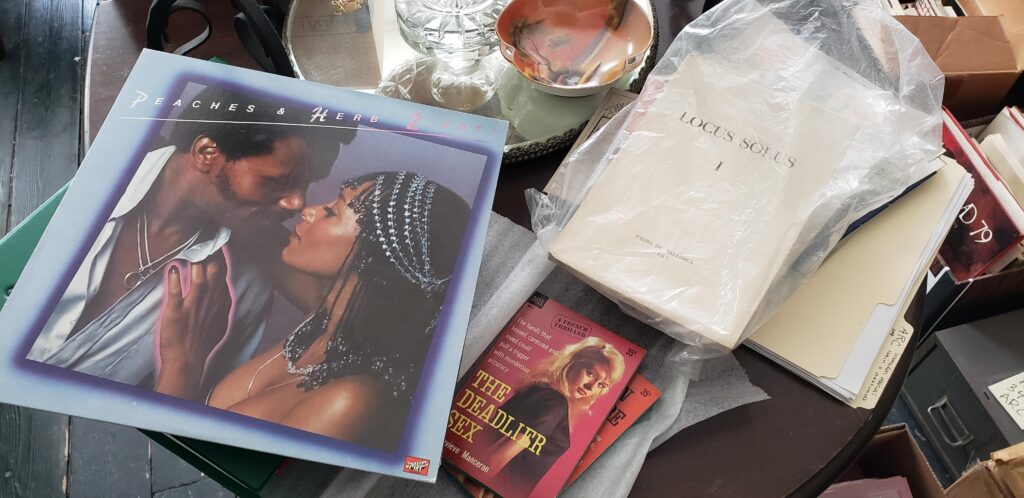
“Do you know why that Peaches & Herb record is here?” Lependorf asked.
I did not. Near-mint copies of this disco best-seller go for just $3, so other than Flow Chart having some impromptu “Shake Your Groove Thing” party, bumping booties and having a ball (no judgments here), I could not imagine why Peaches & Herb would be part of this collection.
And here, dear reader, is where I had that “moment of being” I referred to earlier.
The story, as told to Lependorf by David Kermani, is that Ashbery found himself in a yellow cab in 1983 and heard Peaches & Herb’s #1 hit, the ballad “Reunited,” several times in a row. “He couldn’t get the song out of his head,” Lependorf said. “And so he ran home and bought this album, this very one.”
I was still holding 2 Hot! as he explained that “The Songs We Know Best,” which appears in Ashbery’s 1984 collection A Wave, is an attempt to “exorcise” the tune of “Reunited” out of his head by writing alternate lyrics to the song. “If you look at it, it’s a really strange poem. It doesn’t fit with the rest of the book. It has weird sexual connotations. And you can sing it to the tune.” The first two of the poem’s sixteen quatrains:
Just like a shadow in an empty room
Like a breeze that’s pointed from the tomb
Just like a project of which no one tells—
Or didja really think that I was somebody else?Your clothes and pantlegs lookin’ out of shape
Shape of the body over which they drape
Body which has acted in so many scenes
But didja ever think of what that body means?
It felt as if the record was vibrating in my hand. Somewhere, Lependorf told me, there is footage from the first convening of the Network for New York School Studies in Paris where, led by Lependorf’s piano accompaniment, attendees sing Ashbery’s lyrics to Peaches & Herb.
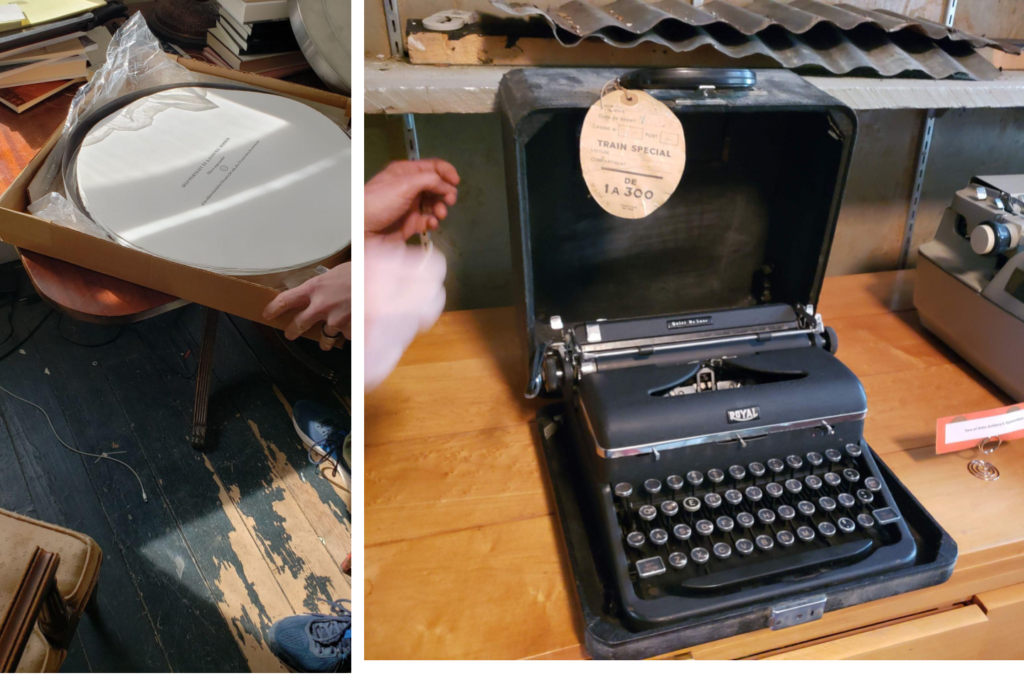
*
For years, I’ve searched for some connection with Ashbery, some way inside the poems. I think a lot of poets have felt this way, so unique is Ashbery’s work, so vast the range. I always wanted to be open to Ashbery. But the idea of waiting to unlock some grand mystery to Ashbery’s work, it seems to me now, misses the point. I’ve never liked the way Ezra Pound’s speaker sounds addressing Walt Whitman in his poem “A Pact,” nor would I be so presumptuous that anyone would actually care if and when I have some breakthrough moment reading Ashbery.
There is, ultimately, some sort of negotiation reading Ashbery, and so at some point I felt myself drawn to how so much his work gives permission to experiment, from ekphrastic book-length projects like Girls on the Run, to collaborations with artist Joe Brainard in Vermont Notebook, to the insanely eccentric chapbook 100 Multiple-Choice Questions. After reading Ashbery’s art criticism and the 2018 collection of his collages, it dawned on me that Ashbery is a poet of the physical world, of objects, a polymath of VHS trashy movies and comic strips, of paintings and wallpaper rolls and avant-garde piano pieces and, yes, even Peaches & Herb. Many other poets, better poets probably, might meet Ashbery head-on, right on the page, line by line, poem by poem. But my way inside was to go in search of John Ashbery in the physical world, in our shared fascination with, or dependency on, material things.

*
On May 16, 1976, John Ashbery read poems at Harvard, his alma mater. The months leading up to this marked a major highlight in the forty-eight-year-old poet’s career. Just over a week before, on May 4, Ashbery had been awarded the Pulitzer Prize in Poetry for his seventh collection, Self-Portrait in a Convex Mirror. On April 19, he won the National Book Award. The previous January 16, in that organization’s inaugural ceremony, the National Book Critics Circle awarded Ashbery their first poetry prize. No writer since has won this triple-crown of literary prizes.
The reading was recorded for posterity and has existed online for years as Harvard’s Listening Booth archive and at the essential PennSound page. But it wasn’t until I dropped the tone arm of my Technics 1200 turntable and heard it on a newly released vinyl pressing that I gave myself time to listen. The cliche really does hold, for me at least, that to engage with physical media slows the mind and helps one focus. John Ashbery’s work requires a special focus, a kind of dipping in and out of lyric and logical impulses. To read Ashbery is to river-raft down streams of polyvocal collage, of phrases borrowed and newly coined, not quite completely detached from meaning but about the making of meaning itself, with pastiche-sprigs of Hollywood and sentimentality thrown in. That’s the way I try to read Ashbery, at least. Your mileage may vary.
*
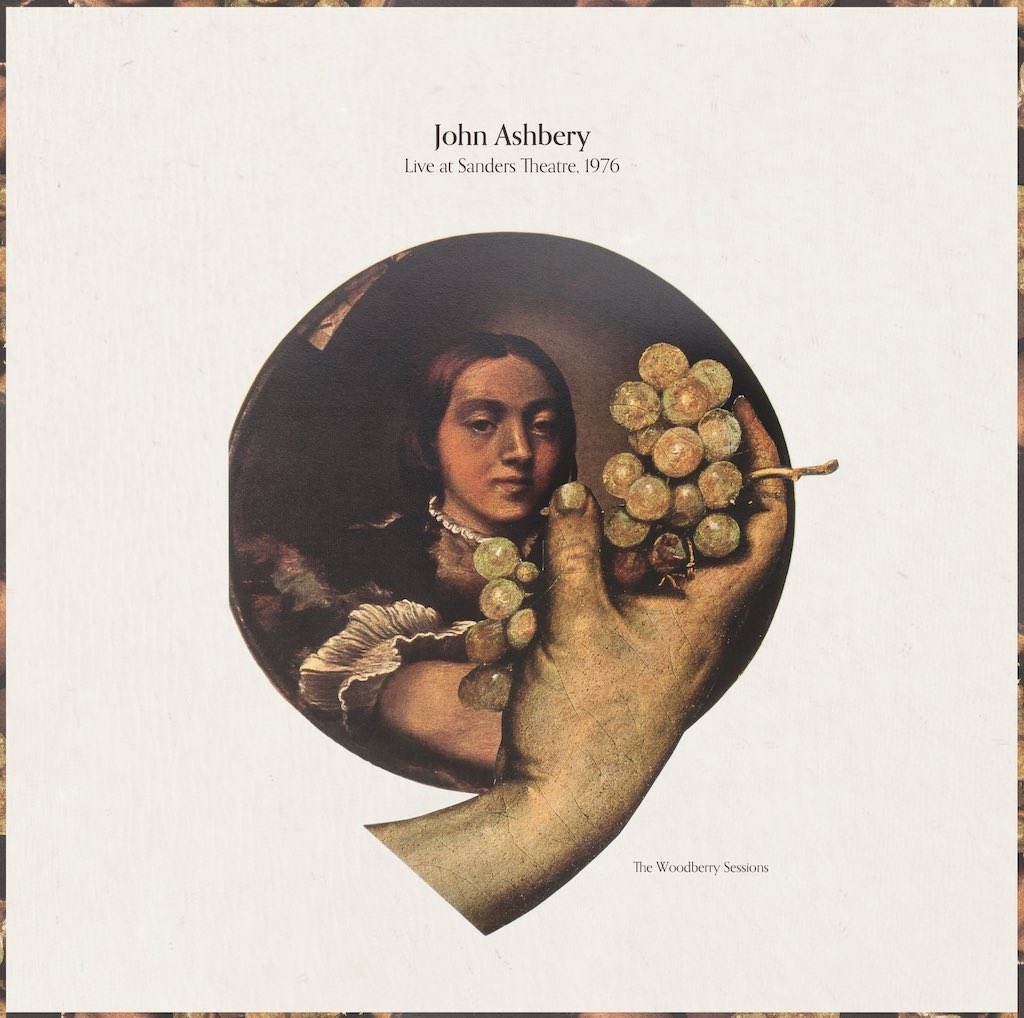
Released by the Portland, Oregon–based literary record label Fonograf Editions, the new vinyl edition of Live at Sanders Theatre includes a sixteen-page booklet featuring artwork, archival material, and essays from Douglas Crase, Dara Barrois/Dixon, and John Yau. It tugged at my record nerd heart to break the shrinkwrap seal and listen to a new John Ashbery record, complete with gatefold sleeve. The full recording of Ashbery’s momentous reading—which, as John Yau writes in one of the record’s essays, “signaled his elevation from a cult figure beloved by a small group to a widely recognized public figure”—clocks in at just over an hour and eight minutes, well more than could be fit on a single LP. Yet with some judicious trimming on Fonograf’s part, Live at Sanders Theatre offers a forty-seven-minute selection of poetry from Self-Portrait in a Convex Mirror, as well as The Double Dream of Spring and what would become his next collection, Houseboat Days.
Banter, on this recording, is cut to a minimum. But Ashbery was not known for banter in any case, as he notes at one point: “People sometimes complain that I don’t talk more about my poems before I read them.” Ashbery was not the sort of poet to, for example, tell a story about going out into the woods and feeling vaguely religious, before reading a poem entitled “Going Out Into the Woods and Feeling Vaguely Religious.” As Yau writes:
Along with his interest in poetic structures was his love of music, from late nineteenth, early twentieth century composers such as Claude Debussy and Ferrucio Busoni to Kaikhosru Shapurji Sorabji and Eliot[t] Carter, all of whom are known for the intricacy of their compositions. Although Ashbery mentions none of these things [in the recording], I can assure the listener that he could draw upon them and much else when he was writing his poems. He was fond of quoting Walter Pater’s dictum, “All art aspires to the condition of music.”
Perhaps I’d have found my way into Ashbery’s work decades earlier were it not for this obscuring of his source material’s tracks? For a couple of minutes, Ashbery does stray from his usual practice and talks about circumstances around the writing of one poem, “Pyrography.” Two poets commissioned by the Department of the Interior for a catalog of American landscapes touring for the Bicentennial had “hedged for two years” before finally flaking. Ashbery was then asked to come up with a poem in “about a day.” This was not, he explained to the catalog editor, how he worked.
“Then he told me how much he was paying,” he says, the audience laughing, “and I radically revised my aesthetic program.” The first stanza of “Pyrography” reads:
Out here on Cottage Grove it matters. The galloping
Wind balks at its shadow. The carriagesAre drawn forward under a sky of fumed oak.
This is America calling:
The mirroring of state to state,
Of voice to voice on the wires,
The force of colloquial greetings like golden
Pollen sinking on the afternoon breeze.
In service stairs the sweet corruption thrives;
The page of dusk turns like a creaking revolving stage in Warren, Ohio.
The poem did not end up in the catalog. “Even if I understood the title,” a government employee commented, “I wouldn’t know what this thing meant.”
*
Since John Ashbery’s death in 2017 at age ninety, it’s safe to say that his reputation has increased. This isn’t particularly unique, of course—who is it who said an artist’s best career move is to die? The twist is that, at the time of his death, Ashbery had already been placed at the very top of the poet reputation heap. “John Ashbery Is Dead at 90; a Poetic Voice Often Echoed, Never Matched,” his New York Times obituary headline reads. The source of this unmatched reputation in the first decades of Ashbery’s career, I would say, came largely from those prizes like we mention here, and a critical consensus led by eminent academics Harold Bloom and Helen Vendler. Ashbery never drew from the confessional-narrative-personal schools of poetry, which delighted the post–New Critic notion of a poem as an artifact to etherize and explicate. More than one academic has posited—academics are always positing—that the Ashbery project makes up a continuous lyric utterance; put another way, in the words of one critic, “such poetry does not rely solely on presence and singularity of voice.” Instead, “it opens up a subjectivity towards a plurality which allows a wide variety of relationships with others.”
On the ground among poets, however, I don’t think I’d be guilty of telling tales out of school if I said there had been division for quite some time. Even positive notices seemed to acknowledge some ambivalence. Richard Kostelantez’s otherwise sympathetic 1976 New York Times profile was called “How to be a Difficult Poet.” “Reading Ashbery,” a poet-professor once said to my class in the 1990s, “is like being taken inside a beautiful house, only to find there is nothing there.” We all nodded in agreement. As Ashbery grew into a version of a Poet’s Poet, I’ve talked to other writers who admire Ashbery, but with an asterisk.
I remember, as I shelved books at my college library, encountering a copy of the world’s first computer-generated book, The Policeman’s Beard is Half-Constructed (1984). The poems were ridiculous and surrealistic. (Sample Racter lines: “Now wait. You sang ‘I suppose so,’ you now yodel “my view/ is that you are out of your mind.”) The temptation was too great to compare poems written by this primitive chatbot to Ashbery’s. It was a way to decode (read: debunk) the purported genius of its human counterpart’s poetic project. Me, I found Racter liberating. Coded language, coded desires, embracing chance and randomness, questioning the role of consciousness itself, all of that may seem like a joyless exercise, but Ashbery made it fun.
And the idea of using coded language to express things—queer desire and queer identity, liberation—these are not things for machines, at least yet. As I write this, ChatGPT is making headlines for its ability to produce texts from marketing plans to Shakespeare plot summaries. When I asked ChatGPT to “write a short poem in the style of John Ashbery,” I was presented with sixteen lines of Hallmark drivel (“I am content/Lost in the beauty of the present”). Ashbery’s poems, while often ridiculed, are extremely difficult to replicate. To borrow from Dolly Parton, “It takes a lot of parataxis and ekphrasis to look this inventive, honey.”
“In so many ways, Ashbery remains a mystery to me,” one poet confessed to me recently, not unadmiringly. I remember still another poet say that the poet they return to over and over again, the one that replenishes their work, is what we would now call late-period Ashbery: the book-length Flow Chart and Girls on the Run, collections that were not so much on par with his earlier work than established a whole new standard of experimentation. I’ve been trying to come up with a common element poets who hold Ashbery in the highest regard share, and what I have come up with is they question the meaning of poetry in our everyday lives while also holding the belief in poetry’s pleasure, its role in changing the way we see the world. David Shapiro, in his essential 1979 book on Ashbery, explains it best:
Because the truth itself has shattered into something relative and nomadic. Because our poetry now must be a self-portrait of poetry in the most shattering of mirrors. Because poetry can no longer rely on simply releasing speech, but must rely on the most complex re-writing of releasing speech.
*
I interviewed John Ashbery once. This was 2007, a time when I was cranking out book reviews and author profiles on a regular basis, and fancied myself quite the writer-critic. I’d like to tell you that, during my conversation with someone many considered the greatest living poet writing in English, I kept my cool.
I did not keep my cool.
It was my opportunity to ask John Ashbery some big questions about his work—questions I’d had for years—but I mostly blew it. Listening back to the recording I made for transcribing, I can hear my breath grow quicker from the moment his assistant hands the phone over to Ashbery as he sits in his Chelsea apartment. My voice shakes as I ask Time Out New York–friendly questions like if he liked poetry slams (“it doesn’t sound like a good thing—to be slammed”) and the recent three-day John Ashbery Festival at The New School, which he tells me he was “too embarrassed to go to.” Maybe he could have added something to the conversation, I suggest. Ashbery demurs. “I don’t know how to read my work, so I probably couldn’t have.” Still, he admits that he could have learned something about his work, perhaps. “It’s of course impossible to know how one’s work looks to a reader.”
Listening back to Ashbery’s voice from fifteen years ago, it occurs to me that his answers are like his poems: oblique maybe, but also disarming and welcoming.
One topic I did bring up was his age. Ashbery was about to turn eighty, and it was amazing how his output had, if anything, grown stronger in recent years. I was interviewing him in advance of the 2007 collection A Worldly Country, in which one poem, “One Evening, a Train,” begins:
Still at it, friend?
God likes us to find these things out
for ourselves. In many ways it’s a crapshoot.
It’s not that we’re creeps, only a little strange,
like ice in ice cream. So guess what:
You’re free to leave and take your shaving kit
with you. We’ve had our fill of your sort.
“I certainly do hope I’ll go on writing,” he said. “It’s not unheard of that people are creative into their nineties. [Electronic music composer] Milton Babbitt seems to be. Creeley was certainly productive up until the end. So it’s business as usual.” Ashbery would live another ten years and publish five more collections, as well as a selected later poems and two volumes of collected poems (1956–1987 and 1991–2000) from The Library of America.
*
I did manage to ask Ashbery about Hudson, NY, where he and David Kermani purchased a house, an elegant Victorian, on West Court Street, in 1978. A recent transplant from Brooklyn to Albany, NY at that time, I was curious to hear what Ashbery saw in Upstate New York.
I originally went there because I heard you could get a house for as little as six thousand dollars in Hudson, which is probably true. In fact it was, because I did see one for that price, but it was unlivable. It was a row house but it had no walls of its own on the side, it was really the other houses that were holding it up.
“Luckily,” he added, “the town has gotten better and I enjoy being there.” That’s quite an understatement. Over the past twenty or so years, Hudson has transformed from rust belt upstate New York to what pundits and real estate investors like to call a “Sixth Borough,” complete with cafes, galleries, coffee shops, and regular celebrity sightings. After Ashbery’s death in 2017, the Victorian was sold. (You can still see the house in all its glory thanks to a virtual tour on the Yale Library website.)
*
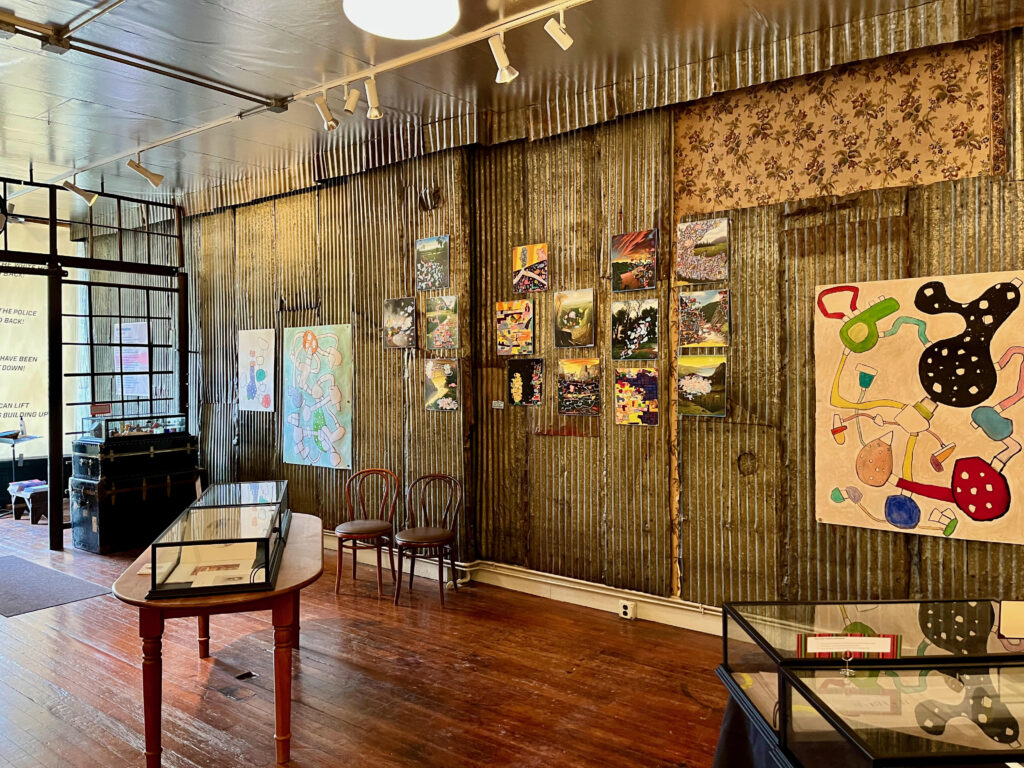
Last July I spent a Saturday at the Flow Chart Space for an event called “Thirteen Million Pillars of Grass: A Gathering,” an-all day marathon of writers, scholars, performers, and readers to celebrate the sixtieth anniversary of The Tennis Court Oath, Ashbery’s second full-length collection, and the poet’s ninety-fifth birthday. There were too many presentations to mention here, but if you’re curious there is a video and audio archive on the Flow Chart website. Vincent Katz began the day by reciting “The Tennis Court Oath” from memory. Son of painter Alex Katz, whose recent eight-decade retrospective at the Guggenheim features a 1977 portrait of Ashbery and Kermani, Katz described listening to Ashbery on record as the “main access point” to Ashbery’s poetry. He then wielded the Giorno Poetry Systems Dial-a-Poem compilation that features Ashbery’s reading of “The Tennis Court Oath.” It begins:
What you had been thinking about
the face seriously bloodied
heaven blotted region
I go on loving you like water but
there is a terrible breath in the way all of this
“It’s very difficult to read his poems aloud,” Charles North said, before his own reading of “Idaho,” the prose poem which closes The Tennis Court Oath. “To me, I’ve always found the wonders of Ashbery more on the page than in the air.” North, quite ironically, then went on to make one of the best reading-slash-commentary performances I’ve ever seen, reading the first line of “Idaho”:
During the past few months, Biff had become quite a frequent visitor to Carol’s apartment.
“What an opening line—or I should say sentence,” North said to start. “I love the name ‘Biff,’” he interjected at another point. Still another: “That’s one of my favorite lines of the poem—and it starts the next line.” To witness North revel in the poem, reacting to lines filled with commas and question marks and pound signs, was delicious.
Scholars Emily Setina and Susannah Hollister, working on a biography of Kenneth Koch, Ashbery’s fellow member of the New York School, presented selected correspondence among the close friends centering on the longer poem “Europe.” “It is less like a history lesson than like a history-making kiss that is somehow planted on the inside of one’s skull,” Koch writes. Koch and his wife, Janice, debate whether or not a hyphen is needed between “Tennis” and “Court” (they decide against it). Setina and Hollister described an “arms race of praise” that the two poets “both sought out and found tiresome.” That these two accomplished poets were both gushy and needy came off as oddly reassuring.
All day I sat in the back, mask on, taking notes. In the same row was an older man with a cane, who I assumed was one of the poets to be featured, but it turned out to be David Kermani.
Kermani and I talked a bit about Albany, where I still teach. “There’s this professor at The College of Saint Rose who teaches John Ashbery’s poems,” he said. We both drew a blank trying to come up with the name. “He had a book with his finger sticking out of his pants,” he said. I realized he was talking about me, and this book. “That’s not my finger, for the record,” I said. “It’s the book designer’s.”
The day closed out with “Twenty-Eight Facts about John Ashbery as Disclosed by John Ashbery in 2006,” presented by poet and critic Joan Retallack. As host of the John Ashbery Poetry Series, Retallack invited readers to write up “a numbered list of facts about themselves” in the place of the pro forma boilerplate introductions. Most readers were “more or less game,” Retallack said, but Ashbery was “downright enthusiastic.”
*
For years, The Flow Chart Foundation had existed mainly as the Ashbery Resource Center, a searchable catalog that grew out of a comprehensive bibliography David Kermani, a trained archivist, had published back in 1976. As we sat inside the apartment above Flow Chart’s new space after my visit last summer, Lependorf explained how, shortly after Ashbery died in 2018, he and his husband invited Kermani over for brunch. Lependorf asked about the fate of The Flow Chart Foundation, an understandable line of questioning from a veteran of running non-profit literary organizations. “We will probably let it go dormant,” Kermani told them. The house and other assets would also be sold off or donated.
“And I had this visceral reaction,” Lependorf told me. “‘You can’t do that,’ I told him, and then apologized afterwards for my outburst! But I did say that an artist as important as John should have a legacy that is actively maintained.”
Kermani asked what an organization associated with John Ashbery might look like. “I immediately launched into a soliloquy on what it should look like,” Lependorf told me. “And the first thought was that the way to keep the Ashbery legacy alive is to not focus on Ashbery, to instead have him be a generative, inspirational figure.” The way to honor Ashbery’s legacy is to continue the conversation, but have the conversation be not just about him. There needs to be public programming as well as services for the scholars, much like the John Cage Trust.
“John was very clear that he did not want a museum,” Lependorf said, as we walked around the storage boxes. “He was very self-effacing.”
*
While foundations that promote writers’ work aren’t particularly new, The Flow Chart Foundation’s playful, Socratic approach points to a mini-trend other literary organizations also emulate. Instead of re-creating the writing rooms of famous authors with simulacra period furniture and gift shops, new author-specific organizations like The Clifton House (Lucille Clifton), The Giorno Foundation (John Giorno), and the Ruth Stone House all have as a mission to promote the legacy of their namesakes, but also bake in mentorship and public programming.
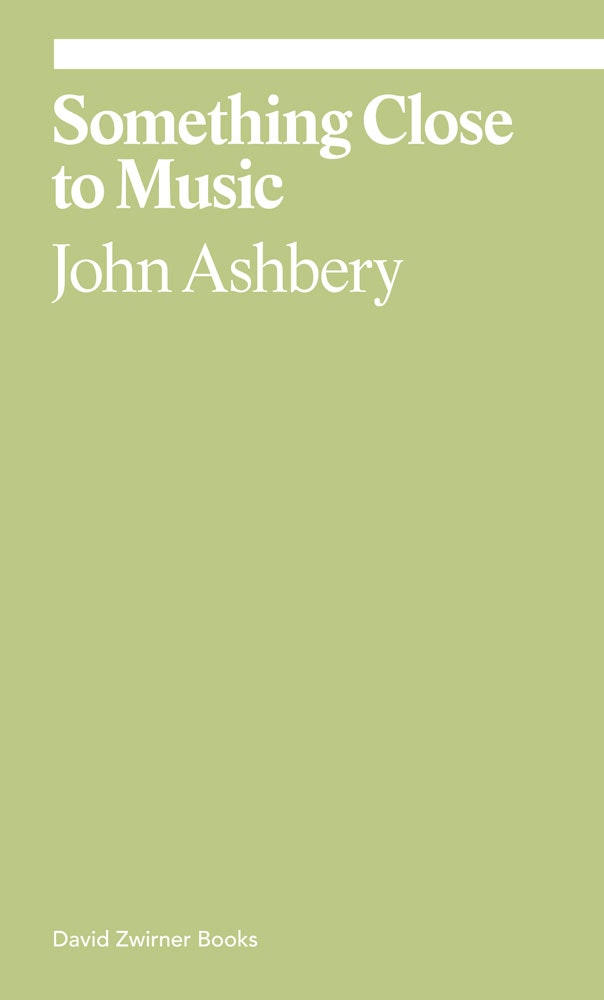
Ashbery’s own shyness and reserve did not exactly prepare me for The Flow Chart Foundation’s expansive work in local communities, from video workshops to an oral history high school summer camp, and programming of poets of all aesthetic stripes. Far from a recluse, Ashbery was in fact super-social in his own way, someone who prized poets’ work, a prolific blurber of younger poets’ books. Ashbery’s poems may have been “difficult,” sure, but they are open-ended and playful in their difficulty. When you walk into the Flow Chart Space, you met with an array of typewriters he owned as well as novelty tea sets. They invite us to grapple with our own difficulties with meaning, sure. But they also remind us to remember to play.
Along with assisting Fonograf in putting together the LP, The Flow Chart Foundation also produced the book Something Close to Music: Late Art Writings, Poems, and Playlists, for which Lependorf selected pieces Ashbery had published late in his career. In addition to reviews, Lependorf includes contemporaneous poems and playlists of music Ashbery would have typically listened to while writing.
As I looked around at all of these physical objects directly and indirectly connected to Ashbery’s work, it was clear to me that Lependorf was on to something. Ashbery’s tchotchke collections and recipe cards and stacks of VHS tapes that surrounded us might not help to unlock the meaning of his poems, but they certainly give us permission to make new meanings for our own.
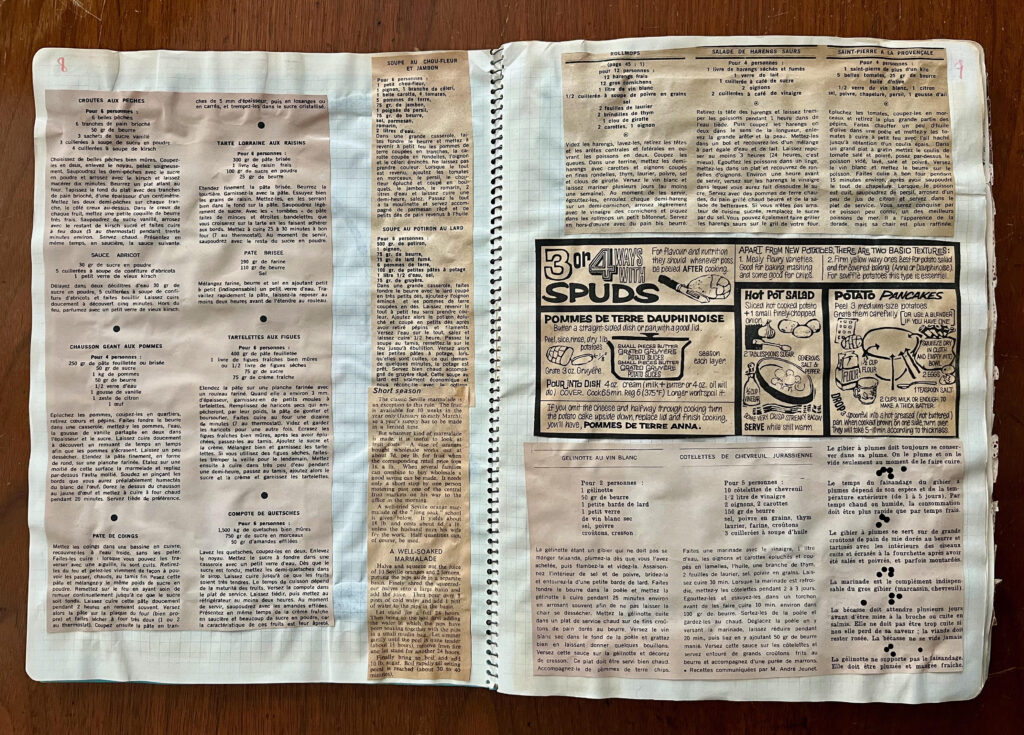
To younger poets, it might seem ridiculous to hear that to write about, or in reaction to, pop music or trashy movies was once not only discouraged, but considered a kind of heretical act against the church of poetry. I remember a time not so long ago when I would cordon off my non-literary interests from my writing—the record collection and This is Spinal Tap went on one shelf, Sylvia Plath and Robert Hayden on the other. What remains vital about John Ashbery, in addition to the work itself, is that our collective sensibility can still catch up with the poems, and it has also spawned a communion of poets who reassure ourselves that we can, and should, summon reactions to a physical world that challenges language with language that challenges the physical world.
Daniel Nester’s latest book is Harsh Realm: My 1990s. He is the editor of Pine Hills Review.
This post may contain affiliate links.







